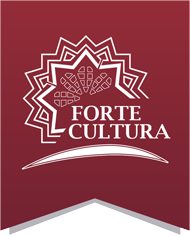VIDEO
Three funiculars and a lift are needed to conquer the giant Bard fortress in the Aosta Valley. Today's mountain fortress was rebuilt on a rock above the Dora Baltea River in 1830 by Carlo Alberto Amadeo (King of Sardinia-Piedmont).
Experience World
Alpine Museum
The Alpine Museum is located on the first floor of the Carlo Alberto Opera House, the main building of the fortress. In 25 rooms, the history of the Alps is told in a multimedia and playful way. The museum explores the most important natural and human components of the mountain world with rooms dedicated to Alpine civilisation, flora, fauna and climate.
Prisons of the fortress
The history of the fortress is vividly told in the former prison rooms. Visitors learn interactively through films, documents and 3D installations about the architectural development and significance of the fortress from the first Ostrogothic Roman garrison in the 6th century to the new fortress construction in 1830. The complex restoration and reconstruction of the fortress between 1996 and 2006 is also vividly conveyed.
Museum of the fortresses and the borderlines
On 2,000 square metres, the Museum of Fortresses uses models, weapons, films and exhibits to vividly convey the history of fortress construction since Roman times. Special sections are dedicated to Alpine fortifications and the Alps as a borderline and border region.
The children's Alps
The museum is aimed in particular at children and young people in order to develop an understanding of the dynamics of climate change and to reflect on their own behaviour in relation to sustainability. Among other things, the development and current state of Alpine glaciers are analysed using augmented reality and photo comparisons.
Medieval village and the Via Francigena
At the foot of the fort, over a thousand years of history are revealed in the streets and squares of the medieval village of Bard. Priceless residential buildings from the 15th and 16th centuries are preserved along the main street.
Monument and History
History The fortress of Bard (Italian Forte di Bard, French Fort de Bard) is a fortress complex with an impressive history. Some important historical events associated with the fortress are:
Quelle: Quelle: Quelle: Desiderioinfrancese
Architecture The natural features of the location open up strategic advantages that were recognised and exploited as early as the 6th century. The steep rocky outcrop above the Dora Baltean River valley is easy to defend and enables effective control of the valley and the trade routes between Italy and France. In the time of Theodoric the Great, there was an Ostrogothic garrison (Clausuræ augustanæ) on the rocky outcrop.
Quelle: D.Röder Quelle: ©Di Anerica2017 Quelle: Foto Livio Colliard
Nature Experience The Bard fortress is not only a historical monument, but also a gateway to nature. In the heart of the Alps, it is surrounded by an impressive mountain backdrop that leaves nothing to be desired for nature lovers and mountaineers. The upper areas of the fortress offer breathtaking views of the surrounding mountains and the Dora Baltea valley. Hiking trails lead through the Alps in the vicinity of the fortress, where you can discover nature, enjoy the fresh air and experience the beauty of the landscape.
Quelle: Quelle: ©Forte di Bard Quelle:
Partner


